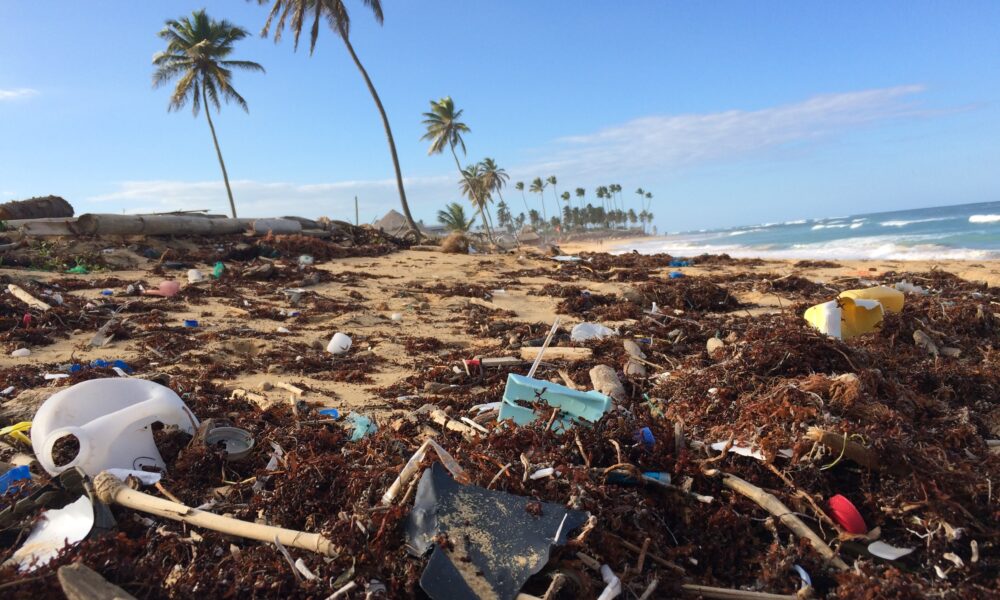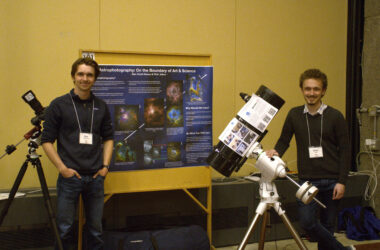The Trottier Institute for Sustainability in Engineering and Design hosted the fifth annual edition of SEDTalks, a program where three graduate students work throughout the winter semester to present their research to the public in an accessible, engaging way. This year’s students presented a wide array of research in public health, sustainable energy, and detecting the impacts of pollution.
Can blueberries help ward off superbugs?
Fathima Afsal, PhD candidate in the Department of Civil Engineering and Applied Mechanics, is researching superviruses that proliferate in the human gut. According to Afsal, one of the most pressing risks facing humanity right now is the development of pathogens that are resistant to antibiotic treatments.
“The next health crisis is not going to be a surprise,” Afsal said during her talk. “In fact, it is going to be due to antimicrobial resistance.”
To better understand how these antimicrobial-resistant pathogens may be developing inside of the digestive system, Afsal studies the human gut biome in all of its complexity.
“Over the past year, I have built in the lab an artificial human digestive system,” Afsal said. “We have tried to give it a very creative name: The ‘gut-imulator,’ consisting of different compartments ranging from the stomach to the small intestine.”
The gut-imulator is fed three times a day, with pH levels and bacteria presence carefully monitored in each compartment. Using this technique, Afsal can study how specific chemicals called anthocyanins affect the proliferation of resistant bacteria. Anthocyanins, commonly found in blueberries, are believed to help ward against microbial resistance, but a comprehensive study into its effects has yet to be carried out.
Using rocks to store energy sustainably
Hamidreza Ermagan, a PhD candidate in the Department of Mining and Materials Engineering, is studying a new way to store energy for later use: Heating rocks in an insulated chamber and releasing that heat later, in the form of energy. According to Ermagan, this could be the key to harnessing the full potential of renewable energy.
“Renewables are not always available when needed and they’re not always needed when available,” Ermagan said during his presentation. “We need to find a way to address this mismatch between energy supply and demand.”
Current energy storage methods, like lithium-ion batteries, are expensive and require the mining of toxic chemicals. Simple rocks, on the other hand, are cheap and abundantly available. They also have several beneficial properties for energy storage.
“Rocks do exceptionally well at withstanding really high temperatures, and that is really important for us, because we are not only interested in storing heat as heat, but we also want to transform it to electricity,” Ermagan said.
Detecting nanoplastics in our environment
Arav Saherwala, a master’s student in McGill’s Department of Chemical Engineering, is currently developing a reliable method of detecting nanoplastics—small particles that break off from plastic products and pollute the environment.
“These nanoplastics that we’re generating can be smaller than one micron in size,” Saherwala explained. “This is much smaller than a red blood cell and orders of magnitude smaller than a hair.”
This makes them extremely difficult to detect, but using a new technique called enhanced darkfield hyperspectral microscopy, it may be possible.
“What’s high-tech about this microscope is that we get two types of information, we get spatial information, as well as spectral information,” Saherwala said. “For every single pixel that’s on this image, we get a spectrum. And this spectrum is much like a fingerprint, as it’s unique to every element.”
Using this spectral data to identify each material in a sample, Saherwala could identify the precise types and locations of nanoplastics, getting us one step closer to understanding how widespread they are and what impacts they may be having on our environment.








